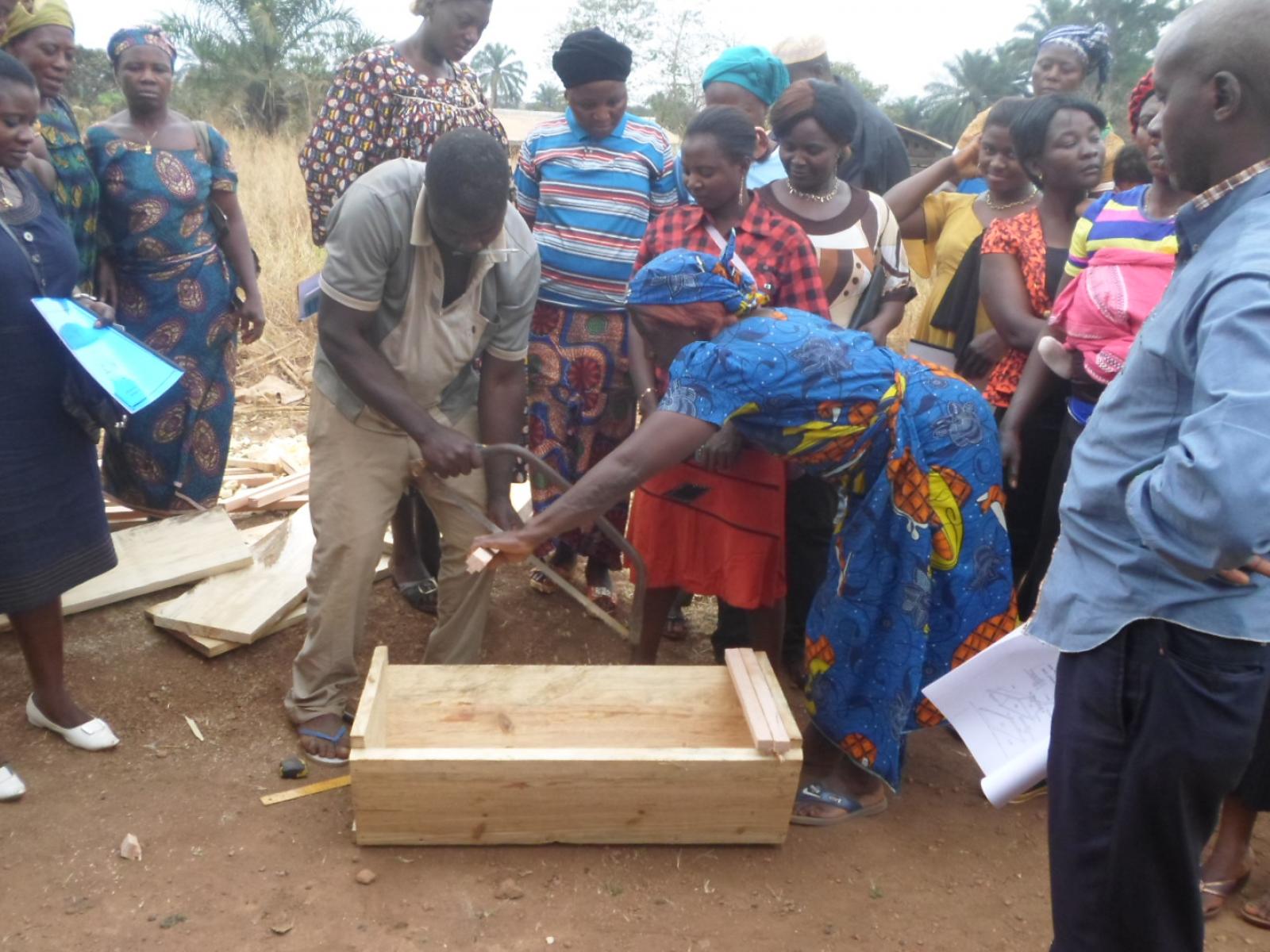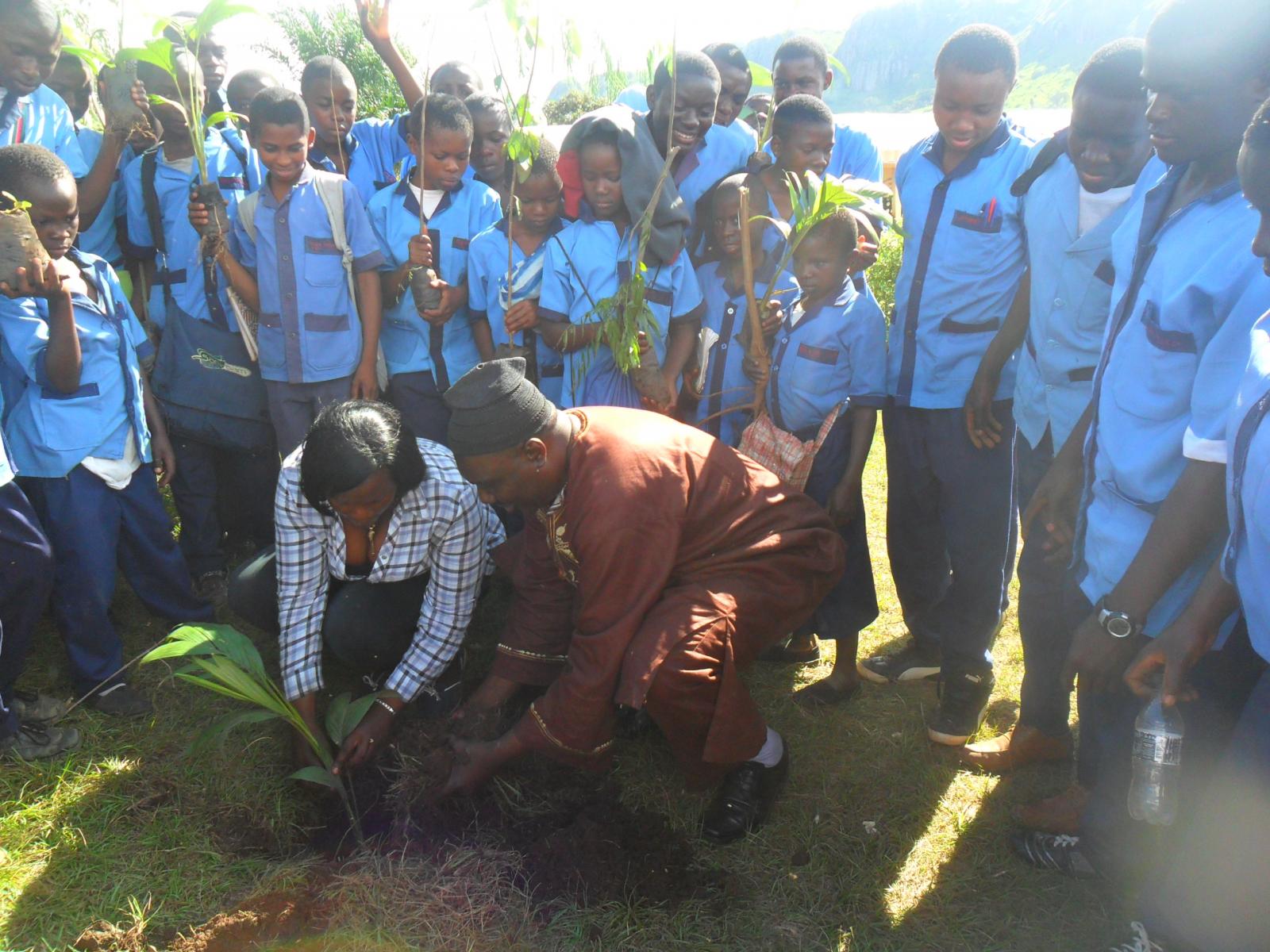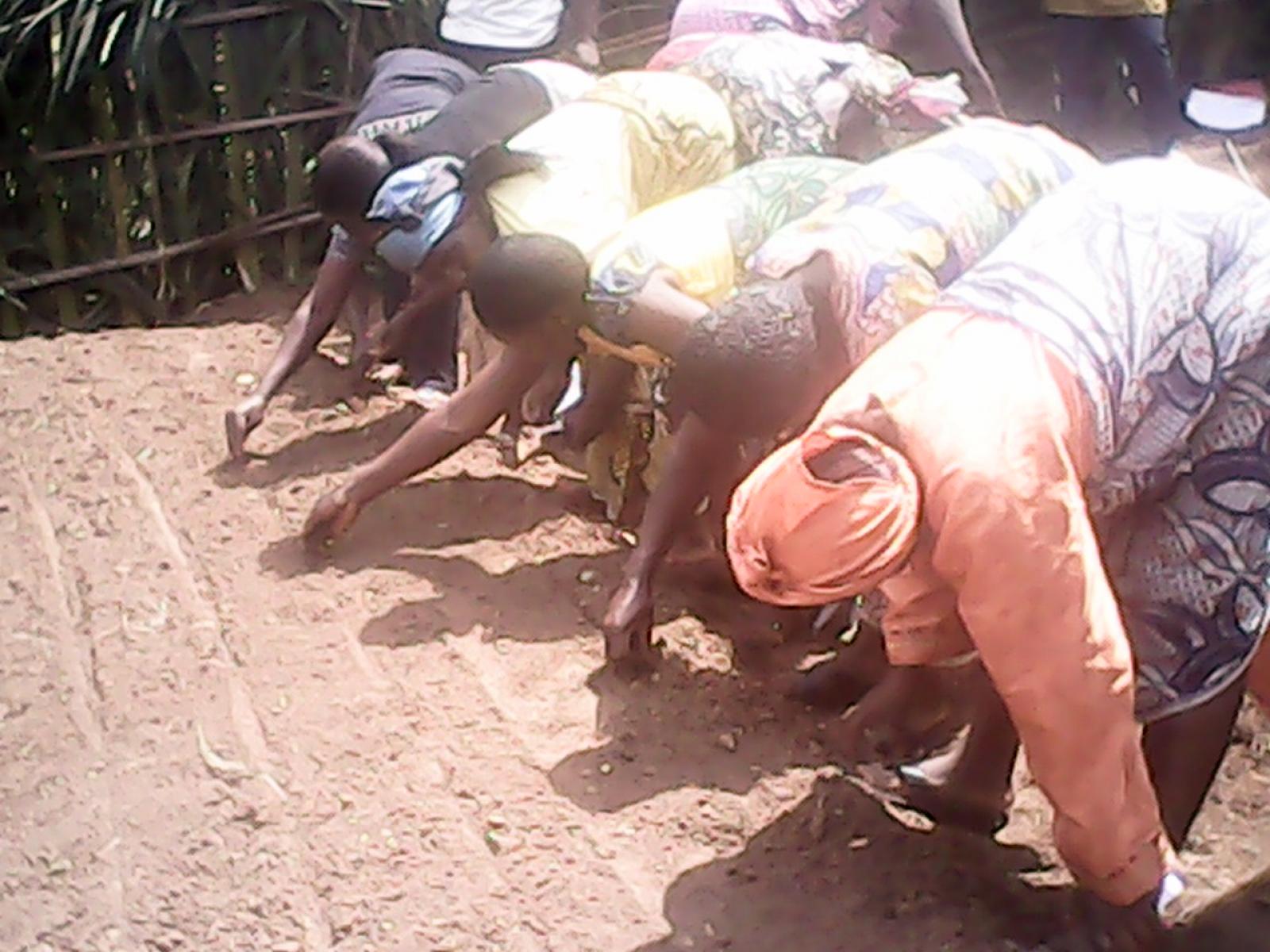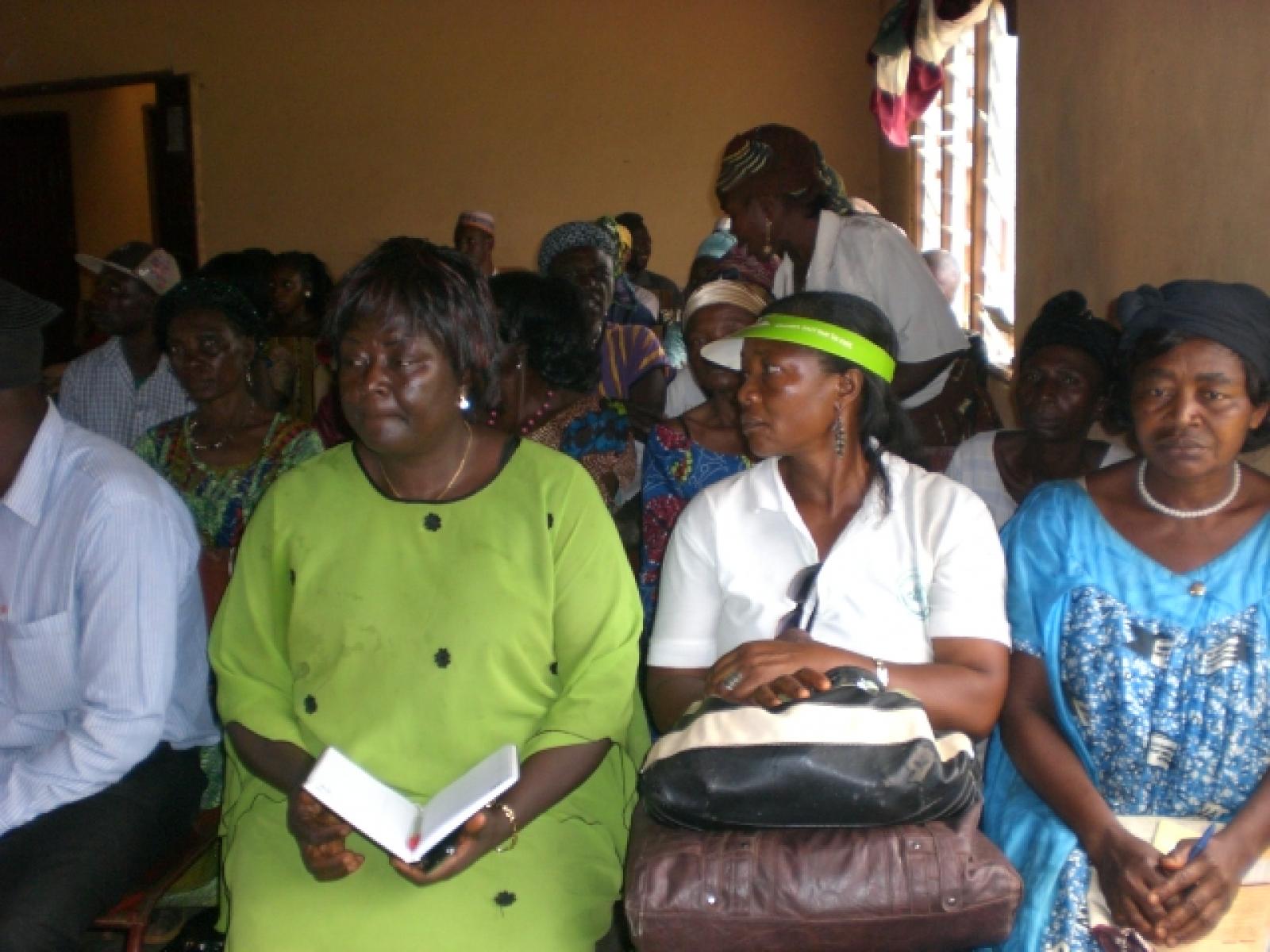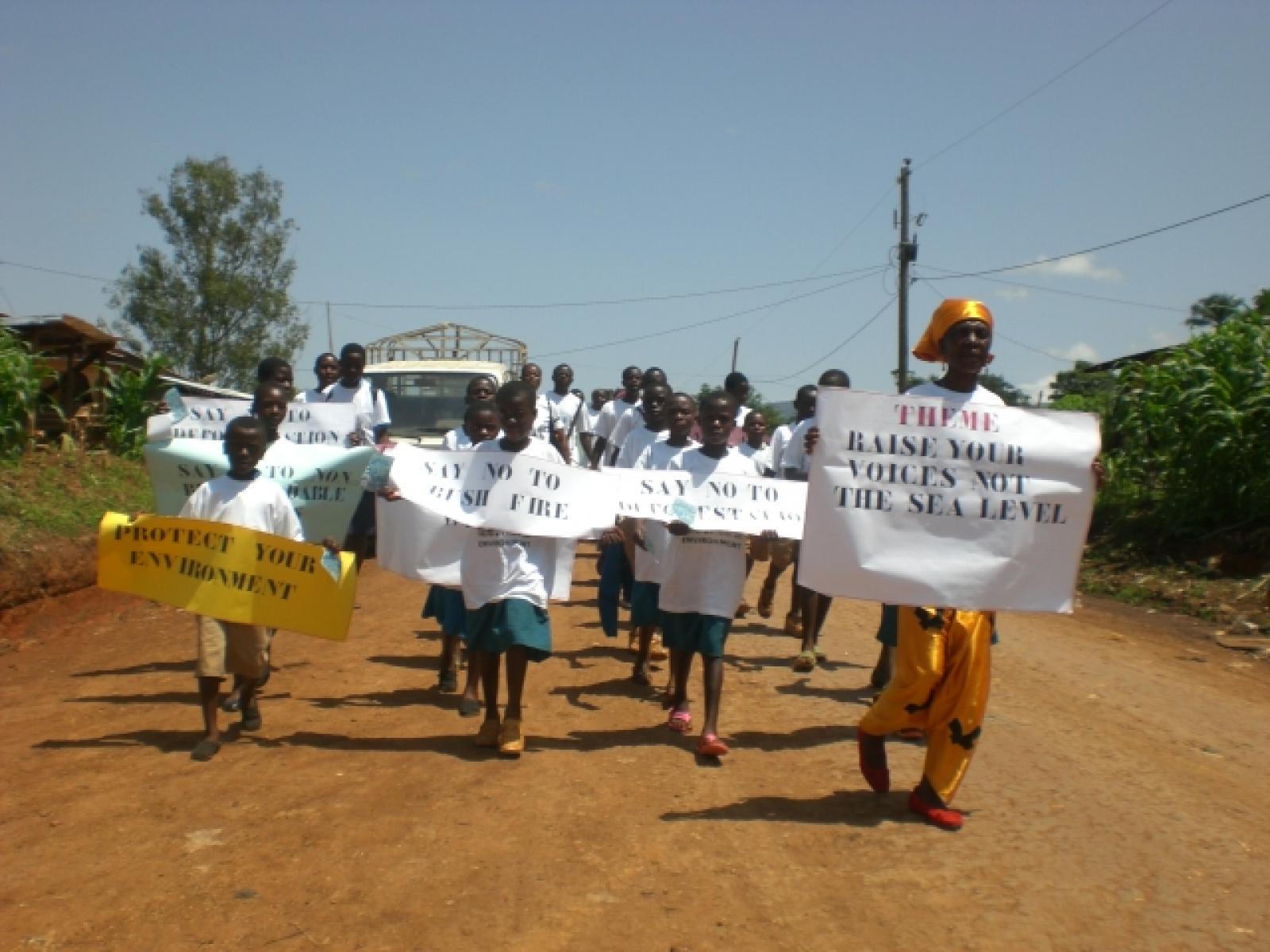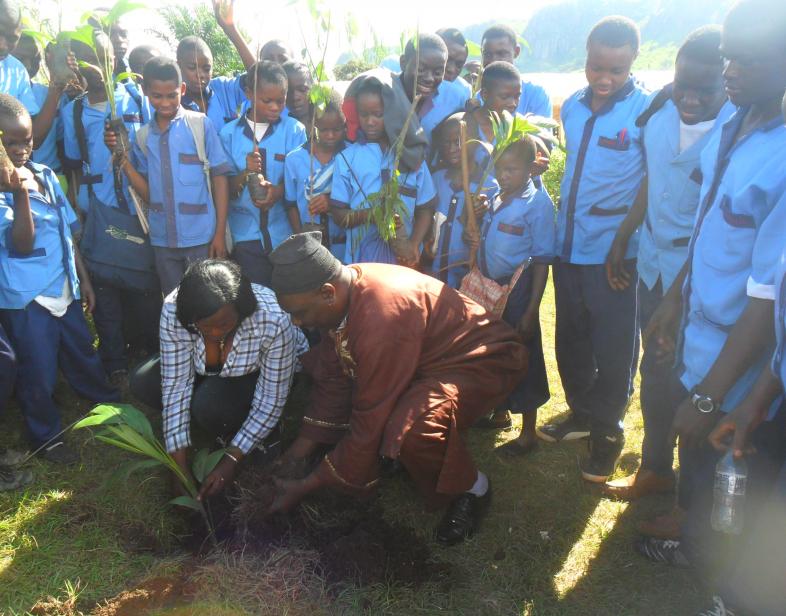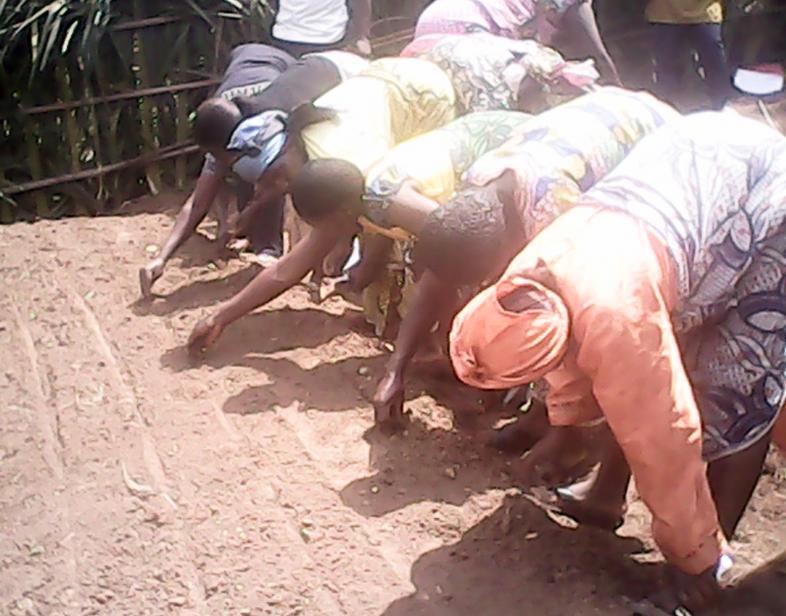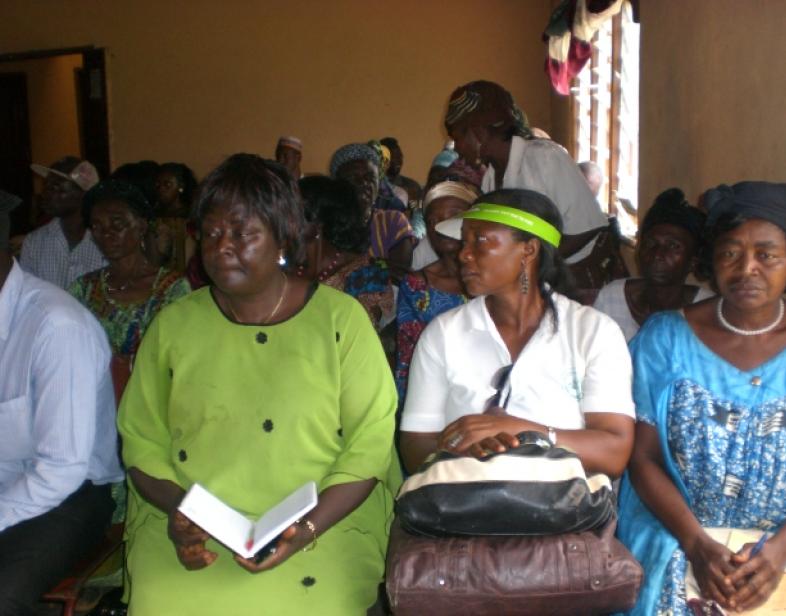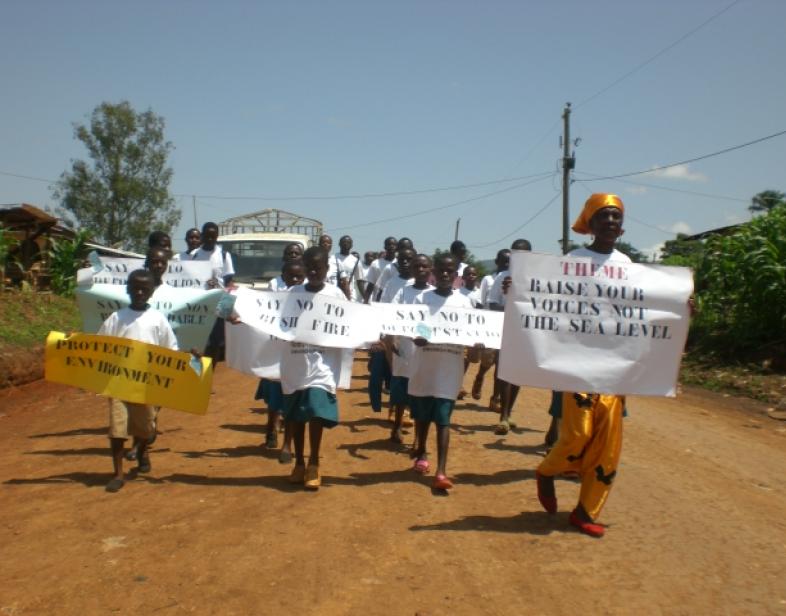An Overview Of Our Solution
Developing countries, especially Cameroon are going to bear the brunt of climate change and suffer utmost from its negative impacts. Mitigation efforts will only provide a partial softening and adaptation is no longer an option. Local climate and terrestrial ecosystems have changed, threatening biodiversity and human livelihoods. These changes are threatening development advances such as the achievement of the SDG’s. Appropriate response strategies must therefore take account of the expected future impacts to develop resilient systems for smallholders farmers. We must overcome its effects and improve the food and fiber production, environmental services and rural livelihoods.
- Population Impacted: 65000
- Continent: Africa
Context Analysis
Severe land degradation has been observed throughout the years in Cameroon, as a result of the continuous increase in livestock density amidst poor and extensive pasture management, overgrazing particularly during the dry season, the use of fire to control weeds and external parasites in cattle, slash and burn to eliminate the over‐matured grasses and residues left after grazing aiding to changes in local climate. This situation overburdened its negative effects on the ecosystem´s capacity to provide natural environmental mitigation (especially carbon sequestration, clean water provision and biodiversity), along with its detrimental impacts on food security and on the livelihoods of the communities that manage those land resources.
Describe the technical solution you wanted the target audience to adopt
Agroforestry technologies for climate change adaptation and combating land degradation. We trained women and girls in agro-cultural roles, teaching them the techniques of nursery creation, seed collection, storage, pre-treatment and agroforestry systems. , CAEPA also engaged up to 1044 women and 650 girls in agro-forestry learning and practice and tree integration, including fruit trees(Training on fruit trees domestication for 40 Smallholder farmers /Mbororo Fulani pastoralists and students: 15 men, 15 women, 5 boys and 5 girls on grafting, cutting and layering) into farming systems to mitigating climate change, and improve soil quality. 6502 Trees of 4 species have been planted covering 40 hectares of degraded land. as well as engaging 80 women in training on using improved clay stoves, Pasture improvement demonstration plots created (each of a ¼ hectare) established per community Much of this work resulted in greater livelihood security and market diversification.
Type of intervention
Describe your behavioral intervention
Reduction in land degradation. Agroforestry technologies for climate change adaptation and combating land degradation. We trained women and girls in agro-cultural roles, teaching them the techniques of nursery creation, seed collection, storage, pre-treatment and agroforestry systems. CAEPA engaged 1044 women and 650 girls in agro-forestry learning and practice and tree integration into farming systems to mitigating climate change, and improves soil quality. 6502 Trees of 4 species have been planted covering 40 hectares of degraded land. Furthermore, essential farming equipment has been provided to 20 women oriented farming groups. Women involved with the project voiced the many benefits they found, especially in the creation of nurseries and the care of seeds, culminating in an increase in production overall. This was notable in the production of maize – production soared by 1 tonne, from a previous 1.5 to 2.5 tonnes per hectare. Much of this work resulted in greater livelihood security and market diversification.
Progression into tree rehabilitation and environmentally-conscious upkeep. Community awareness and conservation education were organised on climate change adaption and mitigation. Environmental clubs were have been created at 12 schools; Not only are the students now better positioned to understand and approach environmental issues as a result of these clubs, they also planted 1000 new trees, and 10 tree nurseries/villages were established
As needed, please explain the type of intervention in more detail
In the past, smallholder farmers used the bush fallow technology to allow degraded soils to regain fertility. As population increased there was a need to feed more mouths. Due to lack of soil improvement technologies, smallholder farmers began clearing the forest in search of fertile agricultural land. They adopted the slash and burn technology as a method of soil fertility improvement. The use of fire by cattle grazer to eliminate mature grass to allow for regeneration for pasture for their cattle increased the amount of CO2 into the atmosphere. Furthermore, the use of chemical fertilizer, insecticides and pesticides led to the development of hard pans thus reducing soil fertility. Agricultural systems most vulnerable to climate change are those already affected by unsustainable management, and land and resource degradation. This situation has also resulted in negative effects on the ecosystem´s capacity to provide environmental services (especially carbon sequestration, clean water provision and biodiversity), as well as in detrimental impacts on food security and on the livelihoods of the communities that manage those land resources.
Describe your implementation
Project launching and participatory planning in which traditional authorities shall provide lands for farming groups. Baseline scans on household demographics crop productivity, farm constraints, use of trees, food security and perspective on climate change, observation of household amenities, soil type, and soil erosion and a number of trees planted for each household. The creation, organization and restructuring of environmental clubs in schools and Fulani community groups and communities in Balikumbat. Sensitization on climate change and land degradation in school environmental clubs and smallholder farmers and common initiative groups. The demonstration of tree planting to students. Training workshop on nursery creation, which taught small farmers especially on which kind of tree to plant. Creation of community nurseries created in Balikumbat, Baligashu and Bamumkumbit. A celebration of World Environmental Day in which government officials takes part in the tree planting exercise at the premises of the council at the sub-divisional hospital. Workshops for smallholder farmers on agroforestry techniques. Integrating trees into farming systems for mitigating climate change on improving soil quality whereby 6502 trees of 4 species have been planted covering 40 hectares of degraded land. Monitoring trees in farming systems where dead trees, which had been planted, were replaced. The setting of demonstration plots on agroforestry system spatial arrangement of trees in agroforestry system such as rotational fallow, boundary planting windbreaks amongst others as a means to mitigate climate change. Training on fruit tree demystifications with the grafting of trees. Women sustainable development fund. Training on the production and the use of improved cooking stoves. Participatory mapping of transhumance zones in Balikumbat Sub Division. Creation of improved pastures plots within the five communities.
External connections
The stakeholders include communities, Ministry of environment and protection of nature at district levels, the ministry of forestry and wildlife at the district level, local governance structures(councils), local government administrators,traditional rulers,schools, the ministry of agriculture at the district level, the ministry of livestock at district level. Before the project this region was characterized by farmer-grazer conflicts because the law governing agro-pastoral activities was outdated. During the project we mapped out transhumance routes and zones. Brought all the stakeholders together and presented results. An agropastoral commission was created to manage conflicts between farmers and grazer. Access to land for group demonstrations farms was an issue due to the project Traditional authorities provided land for farming groups to carry out demonstrations
Who adopted the desired behaviors and to what degree?
Progression into tree rehabilitation and environmentally-conscious upkeep.
Smallholder farmers 1044 women and 650 girls integrated trees, including fruit trees into farming systems to mitigating climate change, and improve soil quality. 6502 Trees of 4 species have been planted covering 40 hectares of degraded land. Environmental clubs were organized at 12 schools; planting 1000 new trees Students now better positioned to understand and approach environmental issues because of these clubs. 20 women-oriented farming groups received improved farming equipment, which resulted in the increased production of maize from a previous 1.5 to 2.5 tonnes per hectare. Engaging 80 women in training on using improved clay stoves. Mapping out transhumance routes and zones and carried out restitution with communities and this resulted in a reduction of farmer-grazer conflict. 40 women living with HIV were trained on market gardening. They have now establish their nurseries and create their gardens.
How did you impact natural resource use and greenhouse gas emissions?
Notable improvements were made in the improvement in rates of the techniques of agroforestry for soil conservation. Environmental awareness was raised. Trees planted will Increased carbon sequestration in soils and biomass and more greenhouse gas sinks (i.e. reduced emissions of methane, nitrous oxide, CO2)- Reduction in soil erosion, stabilizing sediment storage. Green cover of communities is improved as well as the Microclimate. The conservation of fragile agro-sylvo pastoral ecosystems by increasing area of land maintained and rehabilitated under SLM practices. Pressure on natural resources caused by women for the collection of fuelwood, unsustainable agriculture practices is reduced due to their involvement in sustainable income generating activities
What were some of the resulting co-benefits?
40 women living with HIV were trained on market gardening. Participants acquired knowledge of compost production and establishing and maintaining a garden with a focus on pest management. They can now establish their nurseries and create their gardens. One central nursery was created with a variety of vegetables (celery, parsley, cabbages, leaks, kotmanjo and tomatoes). The seeds were distributed to the women and they were assisted in creating their home gardens (40 in total). The women are now harvesting enough vegetables to feed their household and some for sale.
With the income generated, women are contributing to their children’s education, among other ways in which women are investing their earned income.
40 women farming group leaders were trained in modern beekeeping techniques. 5 Apiaries were created with 10 hives each. All these were monitored and managed by the women trainees. After monitoring, reports show that about 60% of hives have been colonized. The women produced 150 liters of honey at the end of the project. Money from the sale of the honey was lent out to other group members and also used to engage in other income generation activities.
39 women common initiative group leaders were trained for 2 days on group dynamics, bookkeeping and financial management.
The women groups are now effective since they have democratically elected leaders; the leaders accountable to the groups. They have a very active secretariat that keeps records of all group transactions. The Cooperative society created started a scholarship scheme to send back to school single mothers and school dropout girls who want to continue their education or learn a trade. Presently 10 young girls 3 single mothers, and 4 school dropouts have been sent back to school. 3 pregnant young girls have been sent to learn tailoring and interior design.
Sustainability
The women sustainable development fund created is running an agricultural financing project were loans are given to small scale farmers and their capacity is built in terms of knowledge and they are provided with skills on agroforestry technologies especially tree intergration (legumes) for soil improvement and also fruit trees.The fund also provide women with capital to engagae in income generation activities such as sale of palm oil, dry fish, kerosene, groundnuts, public restaurant and poultry farming as an adaptation measure to diversify their incomes sources
Return on investment
$70,000. The impacts of the project include; Small-holder agroforesters have adapted to current and future climate, and have benefited from participation in efforts to mitigate climate change. Local knowledge on climate risk adaptation is available and used as the basis for climate change adaptation practices and strategies. Policy options have been identified and implemented for mainstreaming climate change adaptation in agriculture and NRM development. Improved and sustained agroecosystem productivity in the face of climate change, Knowledge utilized on the role of Agroforestry and sound natural resource management for enhancing the ability of smallholder farmers to adapt to current and future climate change.
How could we successfully replicate this solution elsewhere?
The project requires $70,000 as total budget but communities will contribute 10% both in Kind and cash, the organization will contribute 40% both in kind and cash and donor will contribute 50% in cash. The stakeholders include communities, Ministry of environment and protection f nature at district levels, the ministry of forestry and wildlife at the district level, local governance structures(councils), schools, the ministry of agriculture at the district level, the ministry of livestock at district level additional needs include logistics for workshops and transportation accommodation and feeding during fieldwork
